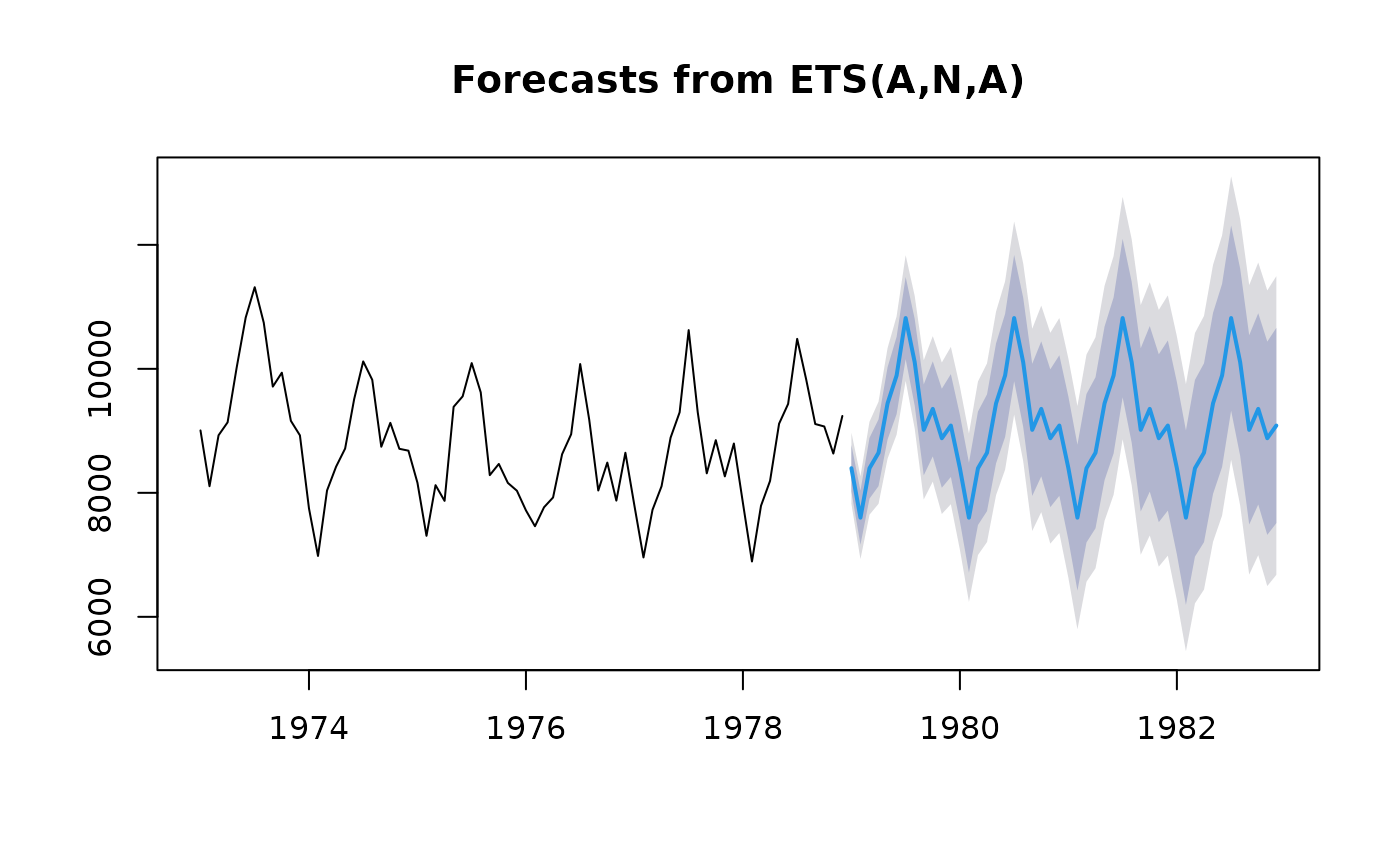Returns forecasts and other information for univariate ETS models.
Arguments
- object
An object of class
ets. Usually the result of a call toets().- h
Number of periods for forecasting. Default value is twice the largest seasonal period (for seasonal data) or ten (for non-seasonal data).
- level
Confidence levels for prediction intervals.
- fan
If
TRUE,levelis set toseq(51, 99, by = 3). This is suitable for fan plots.- simulate
If
TRUE, prediction intervals are produced by simulation rather than using analytic formulae. Errors are assumed to be normally distributed.- bootstrap
If
TRUE, then prediction intervals are produced by simulation using resampled errors (rather than normally distributed errors). Ignored ifinnovis notNULL.- innov
Optional matrix of future innovations to be used in simulations. Ignored if
simulate = FALSE. If provided, this overrides thebootstrapargument. The matrix should havehrows andnpathscolumns.- npaths
Number of sample paths used in computing simulated prediction intervals.
- PI
If
TRUE, prediction intervals are produced, otherwise only point forecasts are calculated. IfPIisFALSE, thenlevel,fan,simulate,bootstrapandnpathsare all ignored.- lambda
Box-Cox transformation parameter. If
lambda = "auto", then a transformation is automatically selected usingBoxCox.lambda. The transformation is ignored if NULL. Otherwise, data transformed before model is estimated.- biasadj
Use adjusted back-transformed mean for Box-Cox transformations. If transformed data is used to produce forecasts and fitted values, a regular back transformation will result in median forecasts. If biasadj is
TRUE, an adjustment will be made to produce mean forecasts and fitted values.- ...
Other arguments are ignored.
forecast class
An object of class forecast is a list usually containing at least
the following elements:
- model
A list containing information about the fitted model
- method
The name of the forecasting method as a character string
- mean
Point forecasts as a time series
- lower
Lower limits for prediction intervals
- upper
Upper limits for prediction intervals
- level
The confidence values associated with the prediction intervals
- x
The original time series.
- residuals
Residuals from the fitted model. For models with additive errors, the residuals will be x minus the fitted values.
- fitted
Fitted values (one-step forecasts)
The function summary can be used to obtain and print a summary of the
results, while the functions plot and autoplot produce plots of the forecasts and
prediction intervals. The generic accessors functions fitted.values and residuals
extract various useful features from the underlying model.

